Domatic
Home Automation
Home Assistant
GetWired
A complete solution for easy-to-use and affordable wired home automation
Funding ended on Mar 17, 2020 at 04:59 PM PDT.
Domatic
Home Automation
Home Assistant
Funding ended on Mar 17, 2020 at 04:59 PM PDT.
When you hear "wired home automation," you probably think "difficult and costly." Well that’s about to change. We believe it’s high time that enthusiasts all over the world be given the resources they need to assemble a proper wired home automation system. GetWired provides reliable hardware and easy-to-use software that will help you get the job done right.
Reliable, open, and easy-to-use. GetWired is built around the well-known and widely-trusted RS485 communication standard. It relies on the open-source MySensors communication protocol and is compatible with Arduino IDE. It is ready for plug & play interaction with a large variety of open-source home automation controllers, including Domoticz and Home Assistant.
Fast, safe, and battery-free. Given the growing popularity of wireless communication standards, one could be forgiven for thinking that wired systems might just be a thing of the past. But the truth is, wired home automation come with a host of advantages:
When planning a smart home, these are some of the most important factors to consider for long-term reliability.
Wiring your home with actual wires has a reputation for requiring a fair bit of cable, a lot of effort, and even more time. To minimize all three, we have designed GetWired to accommodate a decentralized system architecture characterized by wall-mounted modules distributed throughout the building. This architecture requires only a single additional cable, which can be routed alongside your traditional electrical infrastructure. While we eventually intend to offer products for those who prefer a classic, centralized smart home architecture (and our portfolio already includes a few switchboard-mounted designs like the 4RelayDin Shield), we are firm believers in the virtue of decentralization.
It’s been a busy couple of years for tech journalists who specialize in home automation exploits and IoT vulnerabilities. The recent proliferation of wirelessly-connected, Internet-enabled, sensor-laden devices has produced something of a horror show. Weak security defaults, firmware that never updates itself, sprawling attack surfaces, and a lack of defense in depth have all contributed to the current state of affairs. And now we have to read stories about electronic deadbolts that unlock when asked politely, doorbell cams that expose their admin interfaces on the Web, devices that get recruited into botnets and used to attack other devices, and smart speakers that suffer from demonic possession (and that, on a good day, spend their time siphoning up our personal data).
One of the primary reasons we began working on GetWired was to address the very real privacy and security threats faced by IoT devices and home automation products alike. By limiting attack surfaces, facilitating updates, and keeping topologies simple and transparent, we aim to make your smart home as safe as an old-fashioned light switch.
Take wired communication, for example. We don’t just recommend it because it’s widely recognized as a home automation best practice. We recommend it for the same reason we recommend that your walls be solid and your roof be water resistant. It just makes sense. It’s a house, after all. "Portability" belongs relatively low on your list of priorities.
GetWired’s design also facilitates network isolation – keeping systems like GetWired on their own physical network – which is another best practice. Network isolation, in turn, helps you control if and when GetWired has access to the Internet. While there are reasons to let your household infrastructure go online, you probably don’t want it to do so accidentally.
Finally, if a vulnerability is found in GetWired – and even if, despite the efforts described above, that vulnerability does end up within reach of some malware on your local network or a malicious actor on the Internet – Firmware-over-the-Wire (FotW) support allows you to fix it with minimal effort.
It was quite a challenge to prepare the table below, and we think it needs a brief explanation. We chose to compare GetWired with KNX because, as a public standard with decentralized logic, it is the most similar to GetWired in technical terms. Centralized systems like Loxone, on the other hand, take the opposite approach. Control4 represents a set of products that is popular in the US market, and Shelly provides an example of an affordable, easy-to-use, wireless home automation technology. We did our best to double check all of the information presented in this table, but some details were difficult to find. Please let us know if you see any inaccuracies, and we will address them right away.
| GetWired | KNX | Centralized Systems (e.g. Loxone) | Control4 | Shelly | |
|---|---|---|---|---|---|
| Communication | Wired | Wired | Wired | Wireless + Wired | Wireless |
| System Architecture | Decentralized | Decentralized + centralized | Centralized | Decentralized + centralized | Decentralized |
| Open Communication Protocol | Yes | Yes | No | Yes | Yes |
| Open-Source | Hardware + Software | No | No | No | Software partially open |
| Usable with Open Controllers | Yes | Partially | No | Partially | Yes |
| Modular Hardware (Versatility) | Yes | No | No | No | No |
| Cost | Low | Very high | High | High | Low |
A microcontroller and RS485 transceiver board, with Molex connectors for I/O, that is compatible with a variety of shields. Born of considerable experience with DIY home automation, our MCU Module offers a great many features to home automation enthusiasts while remaining easy to install and use. It is ready for remote, Firmware Over The Wire (FotW) updates and supports various peripherals, including buttons, digital sensors, and analog sensors.
Specifications:
An in-wall mountable, 2-channel AC controller shield for the MCU Module. It features solid state relays, supports 200 W of sustained load (tested under 230 VAC), includes an analog current sensor for power monitoring, and is suitable for use with lighting and roller shutters. Our 2SSR Module, which opto-insulates logic from AC load, is electronically, thermally, and physically fused for maximum safety.
Specifications:
In-wall mountable, 4-channel, 12-30 VDC dimmer suitable for use with white, RGB, and RGBW receivers. Includes analog and temperature sensors and is electronically and thermally fused and opto-insulated.
Specifications:
A switchboard-mountable gateway for GetWired modules. Our Ethernet Gateway serves as a bridge between RS485 and Ethernet communication standards, allowing you to connect your GetWired system – up to 63 modules – to your LAN and to the Internet. It is compatible with a large variety of open-source home automation controllers. And, thanks to an extremely efficient DC/DC converter, it consumes only about 0.3 W of power. It includes a panel with LEDs and buttons that allow you to monitor and control basic functions of the system.
Specification:
Our Quick Launch Guide will walk you through the process of installing and configuring GetWired. You can find instructions and other information in our GitHub repository. Please help us complete a full user guide by supporting our campaign!
All production will be handled by our local manufacturing partner, which gives us the luxury of overseeing the process ourselves to ensure maximum quality and to prevent any miscommunication. We have successfully collaborated with this manufacturer in the past, including on the production of 100 GetWired MCU and 2SSR modules for testing purposes. Manufacturing will start as soon as the campaign ends, and we expect the lead time on our first production run to be at most four weeks. Taking into account testing and packing – and giving ourselves a buffer for unforeseen delays – we expect to begin shipping approximately two months after the end of the campaign.
These products were carefully developed, over the course of almost two years, have been tested under real life conditions, and will be manufactured by a known partner whose facility is located close to our office. As a result, the risks with the greatest potential impact (design and manufacturing issues) are highly unlikely. The most significant actual risk involves component shortages. We’ve been through this before, and lack of availability can delay production which can delay fulfillment. There is also some currency risk. Significant exchange rate fluctuations could leave the project "funded" but underfunded. To minimize this risk, we built in a small safety margin when calculating our funding goal. And of course, if any issues arise, we will inform our backers by way of a project update.
All GetWired products will be delivered to Crowd Supply’s fulfillment partner for final distribution to backers worldwide. For more information, please see their guide on ordering, paying, and shipping.
Produced by Domatic in Wrocław, Poland.
Sold and shipped by Crowd Supply.
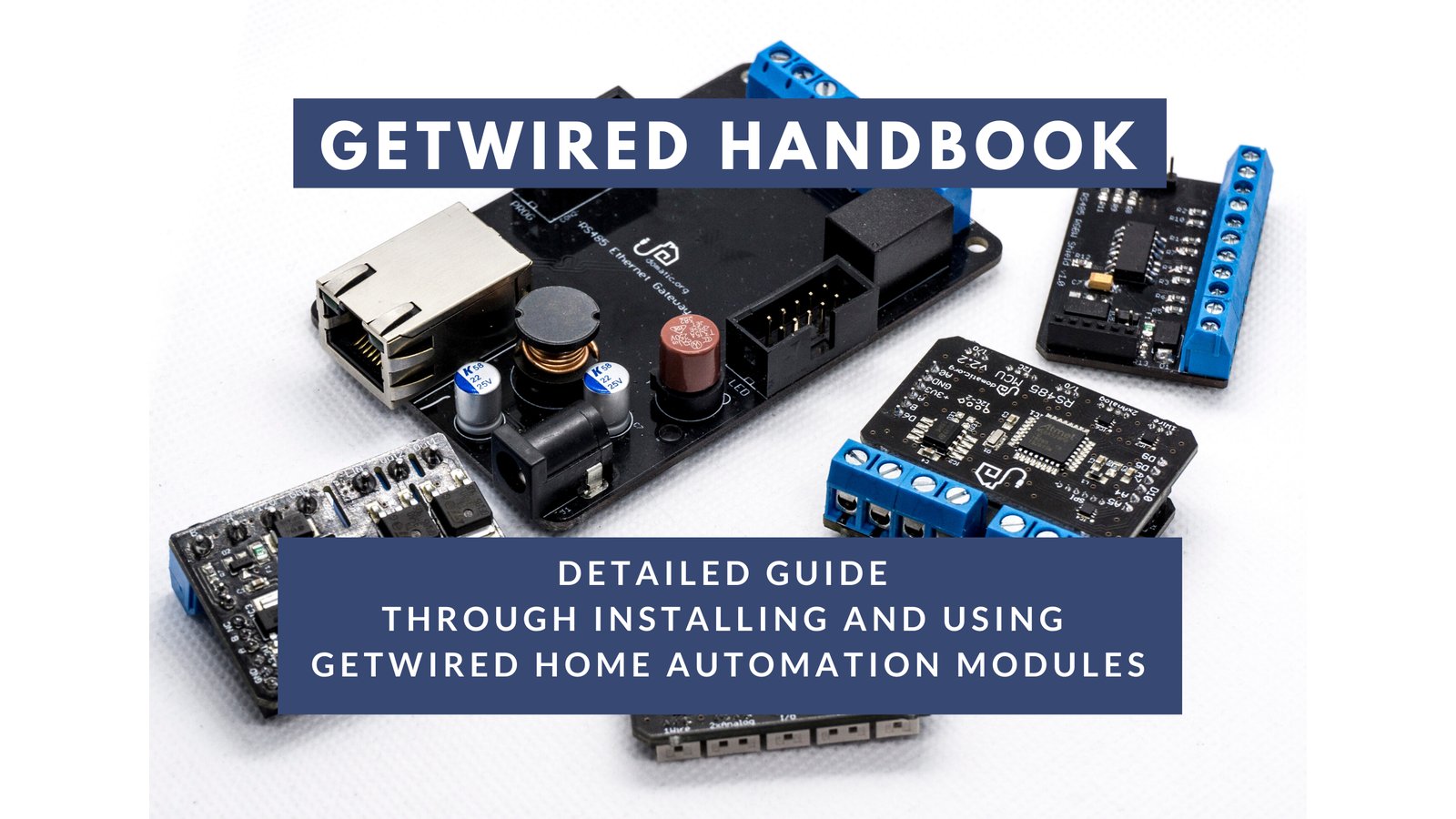
Support the preparation of a detailed GetWired handbook. In return you will receive a clean, legible PDF that describes all GetWired devices in detail.
Want to buy this item? Check the current project page for the latest information.
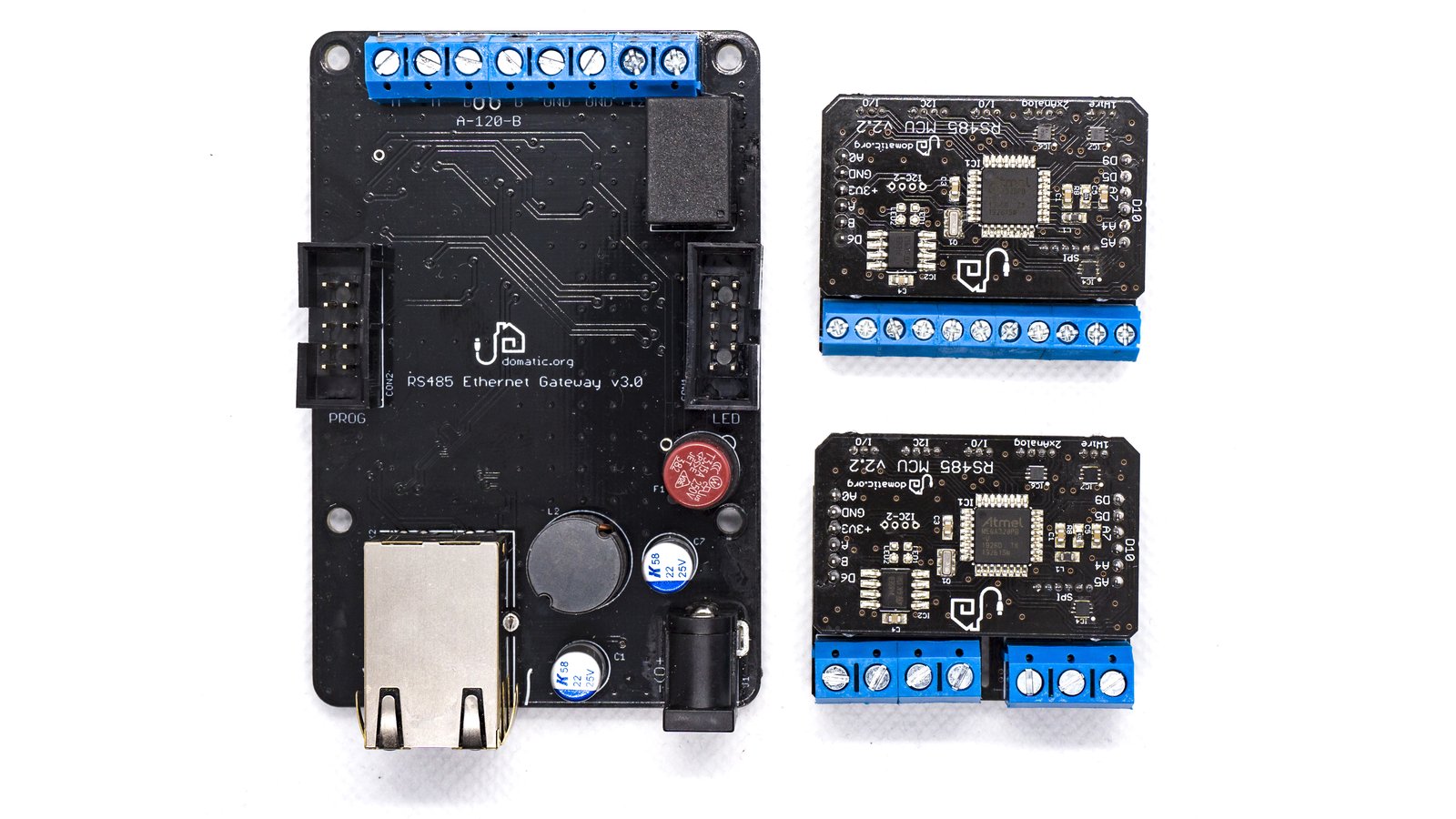
Everything you need to get started: one GetWired Ethernet Gateway, one GetWired 2SSR Shield, one GetWired RGBW Shield, and two GetWired MCU Modules, all fully assembled
Want to buy this item? Check the current project page for the latest information.
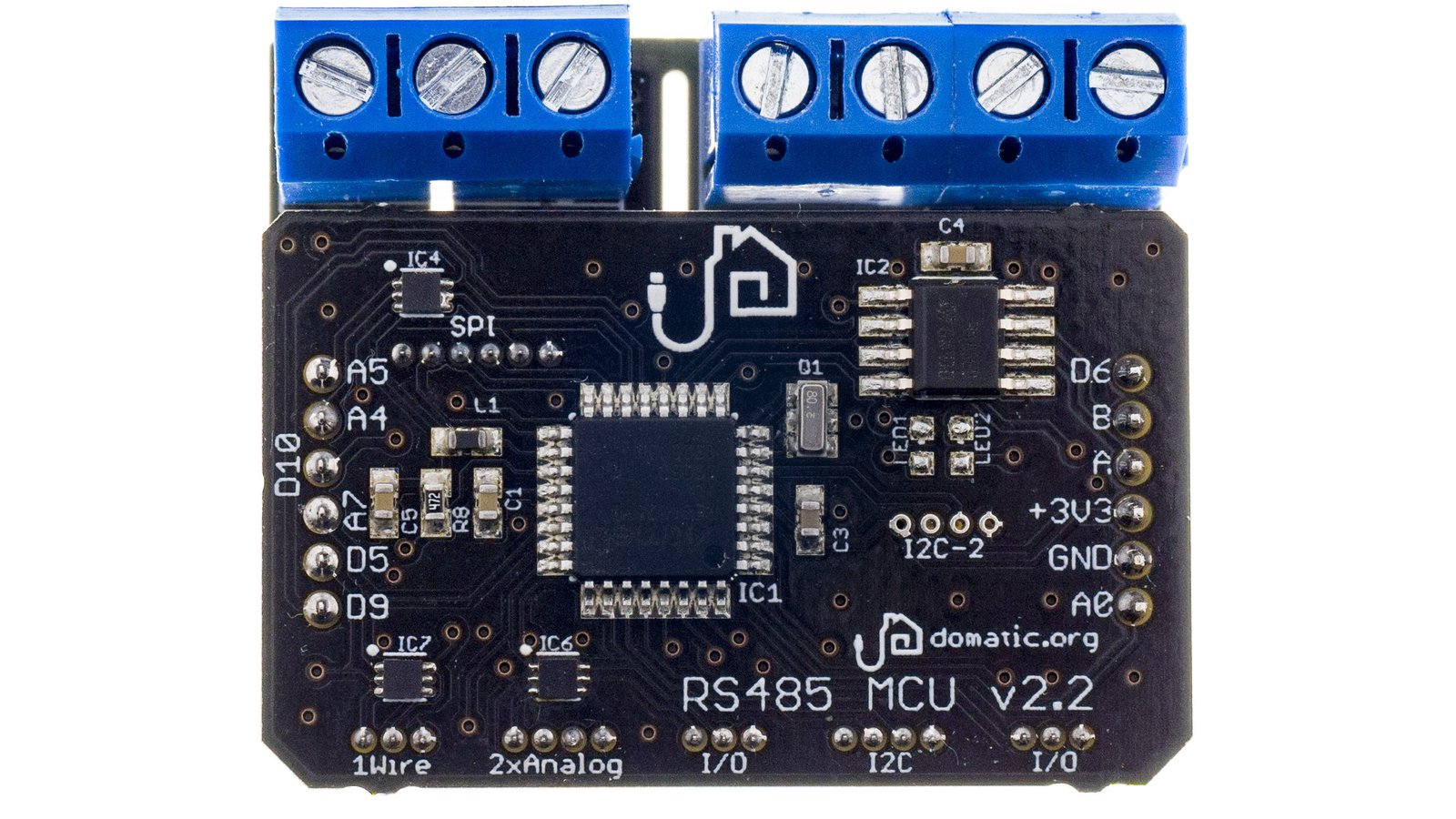
A ready-to-use kit containing one GetWired MCU Module and one GetWired 2SSR Shield, both fully assembled
Want to buy this item? Check the current project page for the latest information.
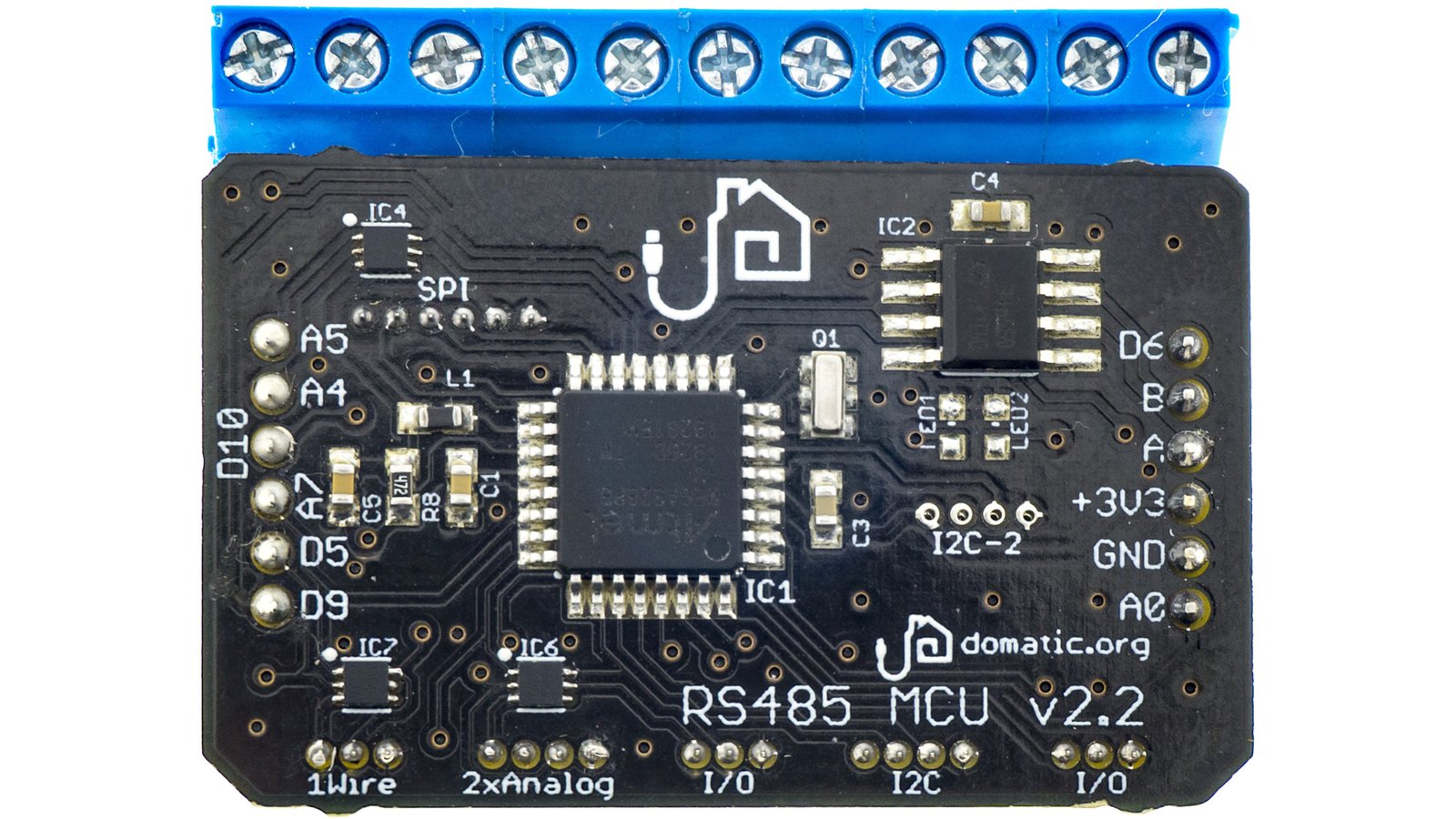
A ready-to-use kit containing one GetWired MCU Module and one GetWired RGBW Shield, both fully assembled
Want to buy this item? Check the current project page for the latest information.
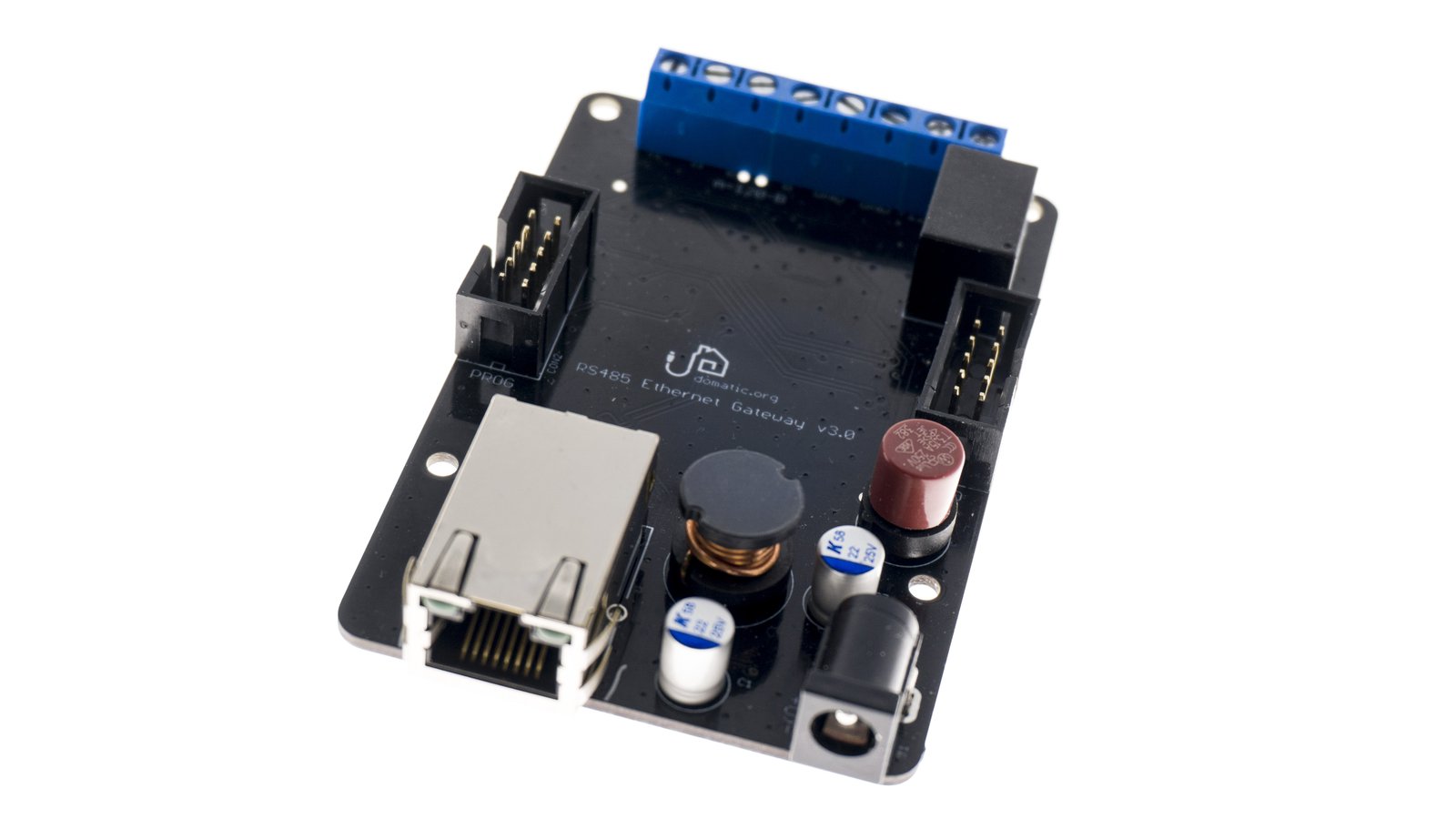
A single GetWired Ethernet Gateway, fully assembled. Essential for most home automation installations!
Want to buy this item? Check the current project page for the latest information.
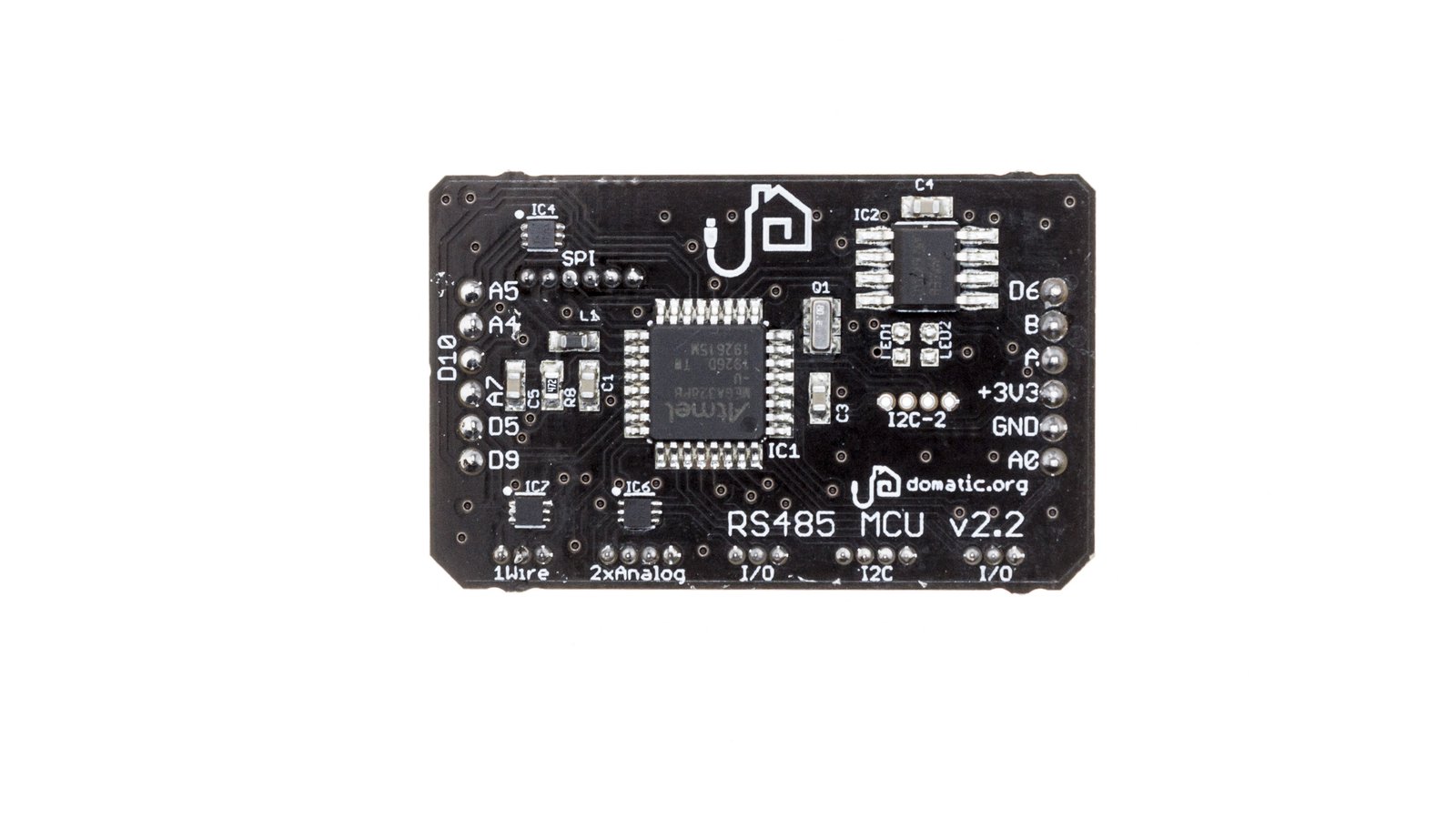
A single, fully assembled GetWired MCU Module
Want to buy this item? Check the current project page for the latest information.

Essential for flashing your MCUs! A single USBasp v2.0 programmer, a custom adapter for GetWired MCU Modules, and some wires.
Want to buy this item? Check the current project page for the latest information.

Wrocław, Poland · domatic.org
We are a company focusing on the field of hardware for wired home automation systems. We value openness, reliability and privacy. Our previous campaign ended up with several dozen of satisfied backers.